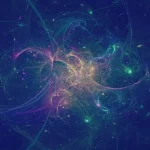Key Takeaways:
- Discovery of Pulsar Nebula “Potoroo”: Astronomers found a swiftly spinning star, PSR J1638–4713, forming a pulsar wind nebula named “Potoroo” located 33,000 light-years away, revealing unique characteristics.
- Formation and Nature of Neutron Stars: Neutron stars, like PSR J1638–4713, are remnants of massive stars, collapsing to ultra-dense cores, spinning rapidly and emitting powerful radiation.
- Pulsar Wind Nebula Dynamics: The wind from the pulsar interacts with previously ejected matter, forming a nebula with a comet-like shape, providing insights into particle movement in turbulent environments.
- Exceptional Properties: The pulsar spins 14 times a second, indicating its youthfulness at an estimated 24,000 years old, considerably young compared to the age of the solar system.
- Scientific Publication: The research findings detailing the discovery of Potoroo were pre-peer reviewed and accepted for publication in the Publications of the Astronomical Society of Australia.
In a groundbreaking discovery, astronomers have unveiled a new celestial marvel, the Pulsar Nebula “Potoroo,” named after the Australian marsupial, shedding light on the mysteries of space. This cosmic phenomenon stems from a rapidly rotating star, PSR J1638–4713, hurtling through the cosmos at astonishing speeds and spinning an astounding 14 times per second.
Utilizing the powerful capabilities of Australia’s Square Kilometer Array Pathfinder (ASKAP), Parkes radio telescope, and the South African MeerKAT radio telescope, scientists made this remarkable finding. Situated 33,000 light-years away, the nebula spans a staggering 69 light-years in radio wave dimensions, a mere fraction when observed in X-rays.
Despite dwarfing our solar system by a factor of 46 in width, the newly christened Pulsar Wind Nebula “Potoroo” showcases a distinct comet-like shape, hinting at the pulsar’s forward thrust amid surrounding matter at speeds reaching 2.2 million miles per hour. This dynamic interaction crafts a bow-shock reminiscent of water displaced by a swift vessel.
The birth of PSR J1638–4713, a neutron star born from the remnants of a massive star’s collapse, marks a pivotal phase in astronomical exploration. This compact entity, only around 12 miles wide but with a mass a thousand times denser than Earth, emits powerful radiation, akin to a cosmic beacon illuminating space.
Through meticulous examination of the emitted light from Potoroo, scientists aim to unravel the intricate dance of particles within this celestial ballet. The collision between charged particles and previously expelled material forms the basis for the nebula’s existence, offering invaluable insights into the dynamics of neutron stars’ turbulent environs.
Revealing its youthfulness at a mere 24,000 years old, PSR J1638–4713 challenges conventional celestial aging, standing as a testament to the dynamism of the cosmos. This discovery’s significance is underscored by its pending publication in the esteemed Publications of the Astronomical Society of Australia, promising a deeper understanding of pulsar wind nebulae and their enigmatic properties.


